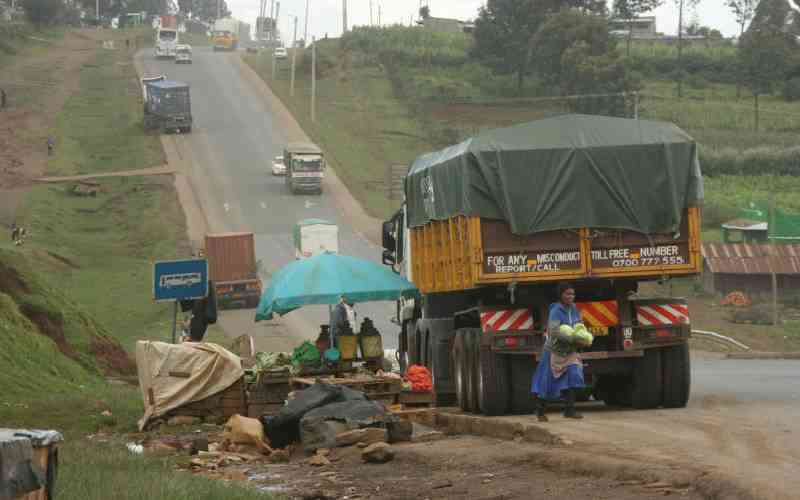Vehicles at Mau Summit area on the Nakuru– Eldoret Highway. [File, Standard]
Former President Mwai Kibaki often posed, with characteristic sarcasm, the question of why certain Kenyans had discovered newfound wisdom. He asked how “they had suddenly become too clever.” He may well have been referring to those who disparage genuine efforts to address national challenges merely to advance their own political ambitions.
A case in point is the controversy surrounding the expansion of the Rironi-Mau Summit road. As part of the Great North Road linking Kenya to key markets in Uganda, Rwanda, the Democratic Republic of Congo and South Sudan, this vital transport corridor has long been overdue for modernisation. The project was recently approved by the Public-Private Partnership Committee which designated a consortium comprising the China Road and Bridge Corporation and the National Social Security Fund Board of trustees to undertake the expansion.
Critics, however, have raised concerns over the project’s financing model. Instead of being funded through the national exchequer, the consortium will build, operate and maintain the highway under a 30-year concession agreement. During this period, motorists will be subject to toll fees, initially set at Ksh 8 per kilometre, with an annual escalation rate of one percent throughout the concession term.
Follow The Standard
channel
on WhatsApp
Given the nation’s substantial debt burden and the limited fiscal for further public borrowing, the PPP model emerges as the most prudent and sustainable alternative. It enables the advancement of Kenya’s much-needed development agenda without imposing additional strain on taxpayers. In this regard, the Rironi-Mau Summit highway stands as a fitting candidate for such expansion.
Since independence, this vital artery has seen little in the way of significant improvement. Today, travelling along it is akin to playing Russian roulette, as the likelihood of a safe journey diminishes with each passing year. The highway now accommodates several times the volume of traffic it was originally designed to bear. Under favourable conditions, a trip that once required merely four hours can now take up to 18 hours. Under the worst, countless lives are lost to accidents resulting from a road design that belongs to a bygone era.
Perhaps what critics truly fear is not the sound reasoning behind the transformation of this vital infrastructure but rather, the project’s potential to reshape public perception. Since assuming power, the Kenya Kwanza administration has often been accused of lacking a tangible development agenda. It has repeatedly been unfavourably compared to the Kibaki government – celebrated for the Thika Superhighway – and the Uhuru Kenyatta administration, credited with constructing the Nairobi Expressway. The new highway, however, could well become the defining symbol of the Kenya Kwanza administration and significantly enhance its prospects for re-election in 2027.
On a related note, earlier this year, this column outlined four measures essential in restoring public confidence in the KK administration. First, the settlement of outstanding government obligations to place money in citizens’ hands. Second, an end to abduction of dissenters.
Third, the initiation of a major infrastructure project. Fourth, the avoidance of imposing additional taxes on an already burdened populace. The first three measures have since been executed. Attention now turns to the fourth; the government must now steadfastly resist pressure from development partners to raise tax rates, particularly indirect taxes, safeguarding the public from further fiscal strain.
Mr Khafafa is a public policy analyst
Follow The Standard
channel
on WhatsApp
By Leonard Khafafa
